E. & H.T. Anthony & Co.
Novel View Camera Variation 2.1
The heavy-duty version of Variation 2.0
11 x 14"; its back is
not original, and has been replaced.
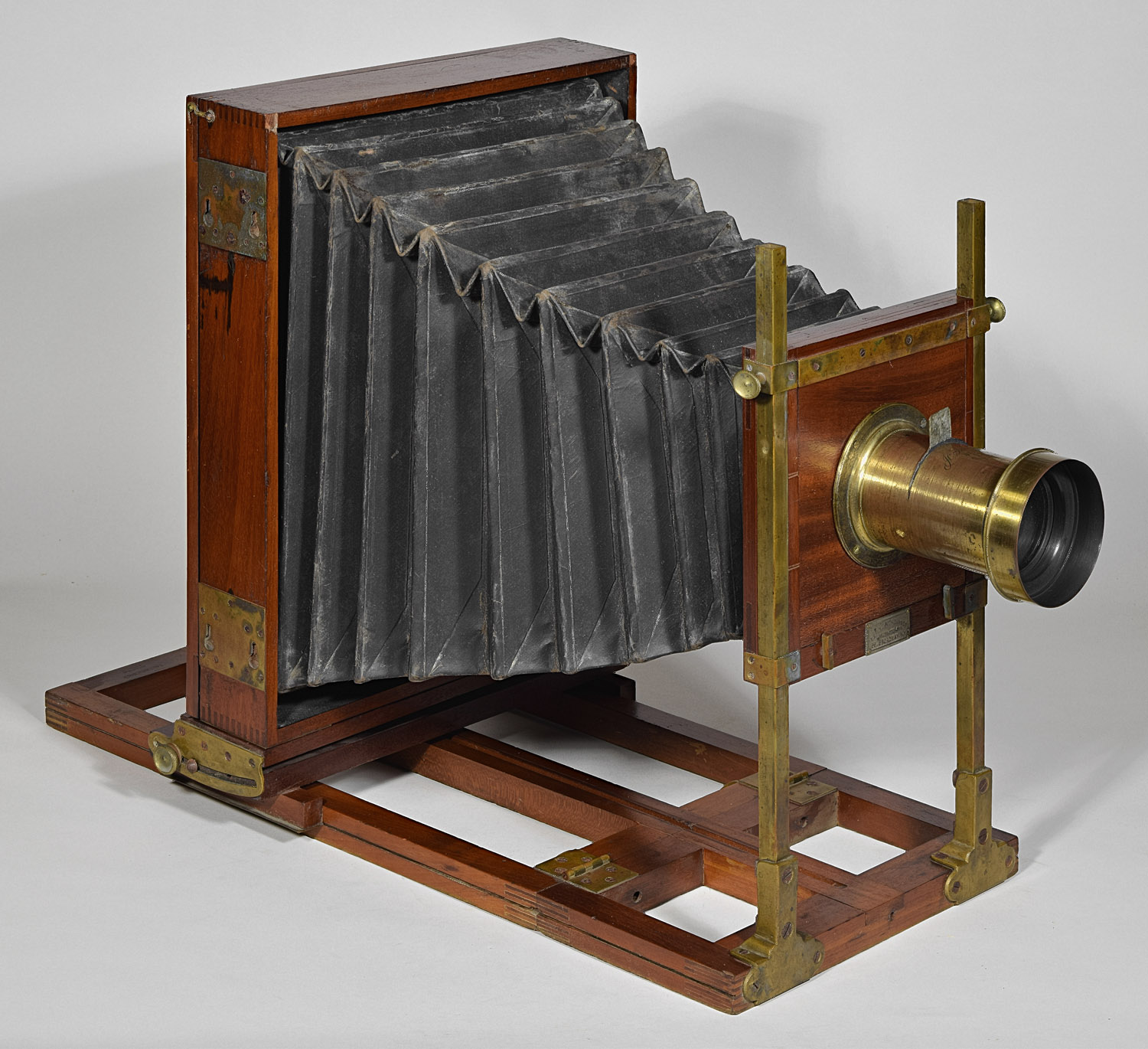
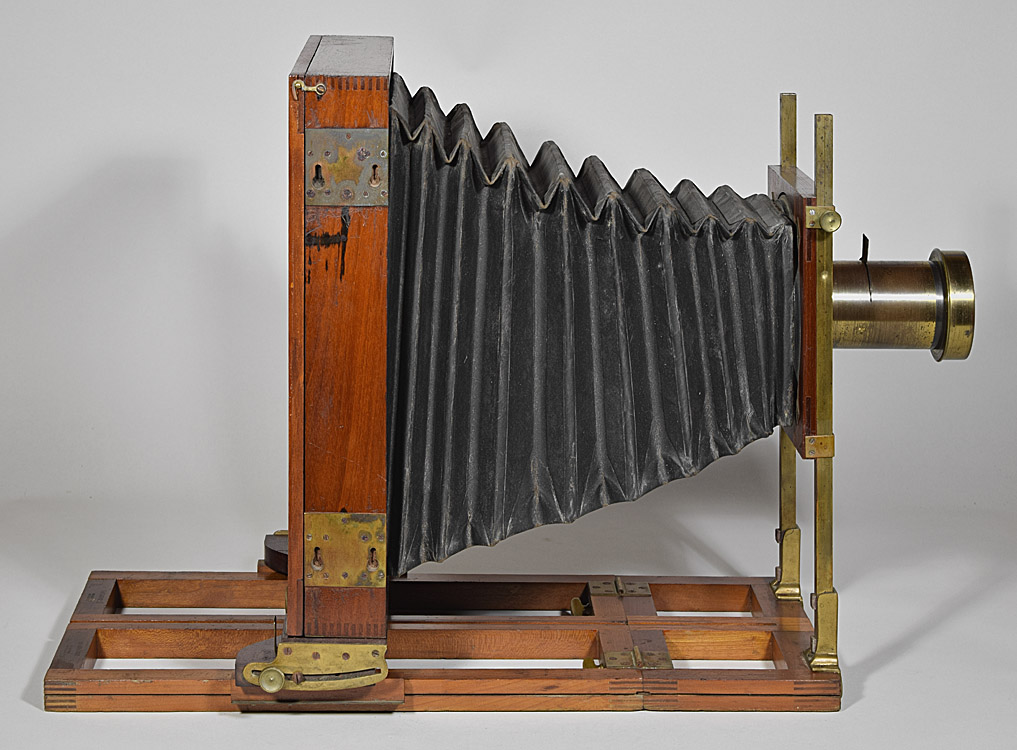
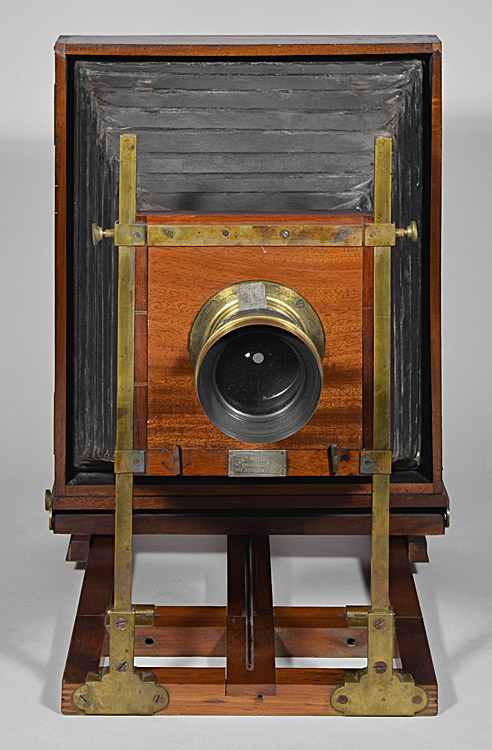


The ground
glass frame in these photos is a replacement made using a spare set of
Anthony glass retaining clips.

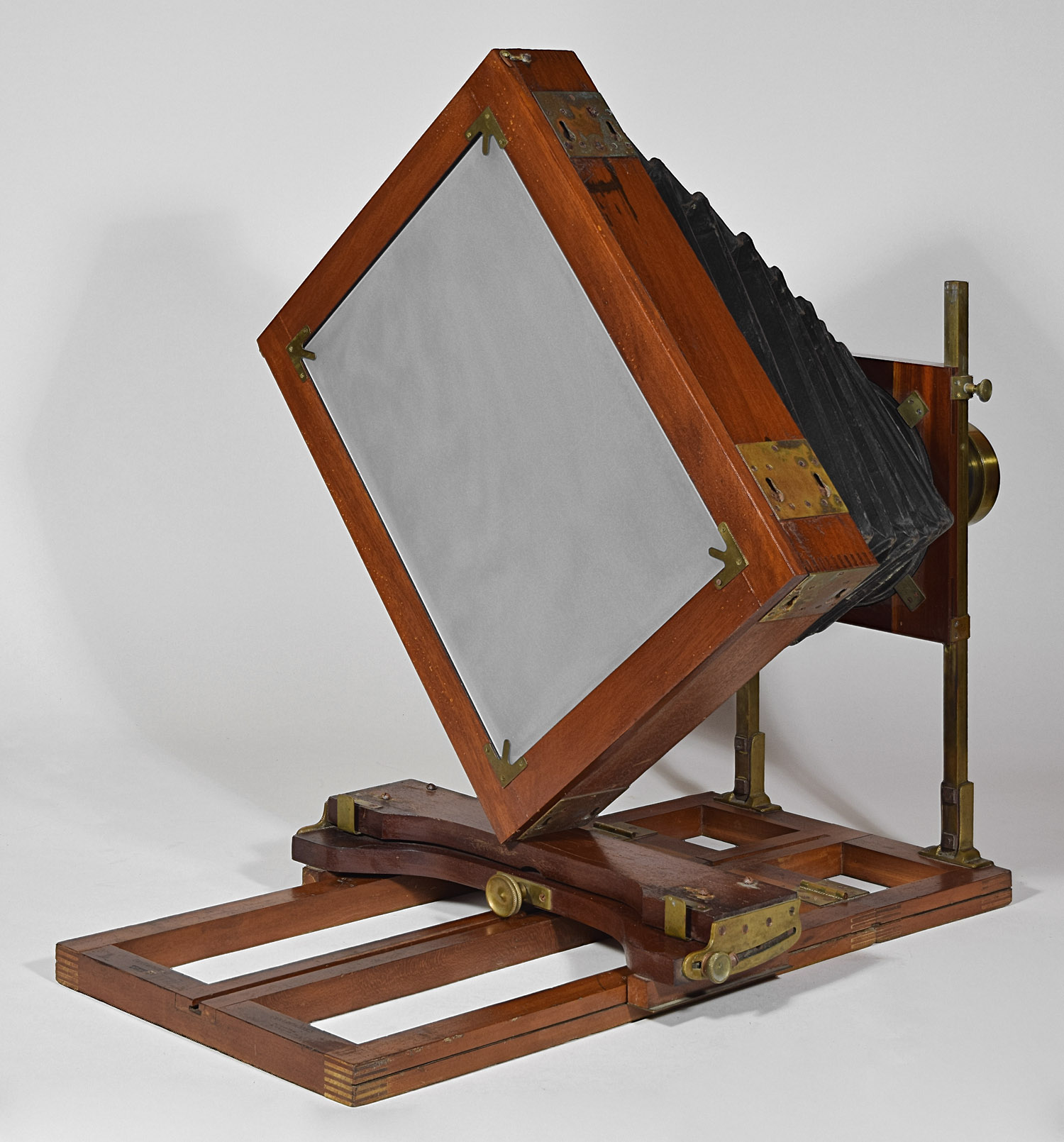
Bottom
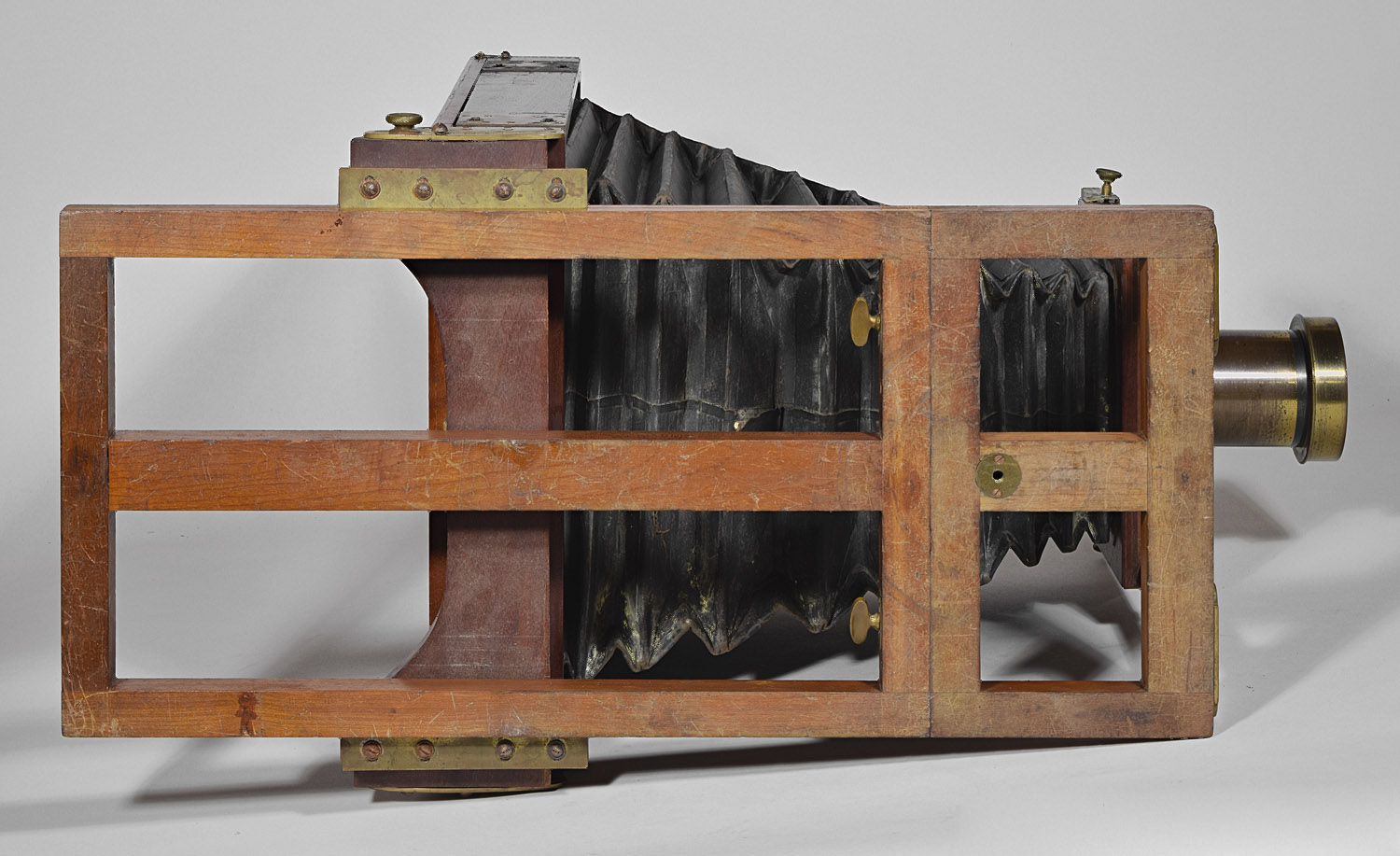
Top

Label, lower front standard

Two stamps for each side of
the rear of the folding platform: "E.&H.T. Anthony & Co." and "Pat Mar.
28, '82 / & Feb. 20, '83"

Another 11x14 Novel having the heavy duty
hardware.
This one has the original ground glass frame.
This camera is slightly later in vintage to the one above, since it has
the 1884 patent date in addition to the 1882 and 1883. Oddly
enough, that 1884 patent is for Anthony's patent platform hooks, that
make the bed rigid - but the camera does not have that feature, the
platform being connected by a robust thumbscrew, which, given that many
of those hooks get loose over time, was a good choice for this large
camera.
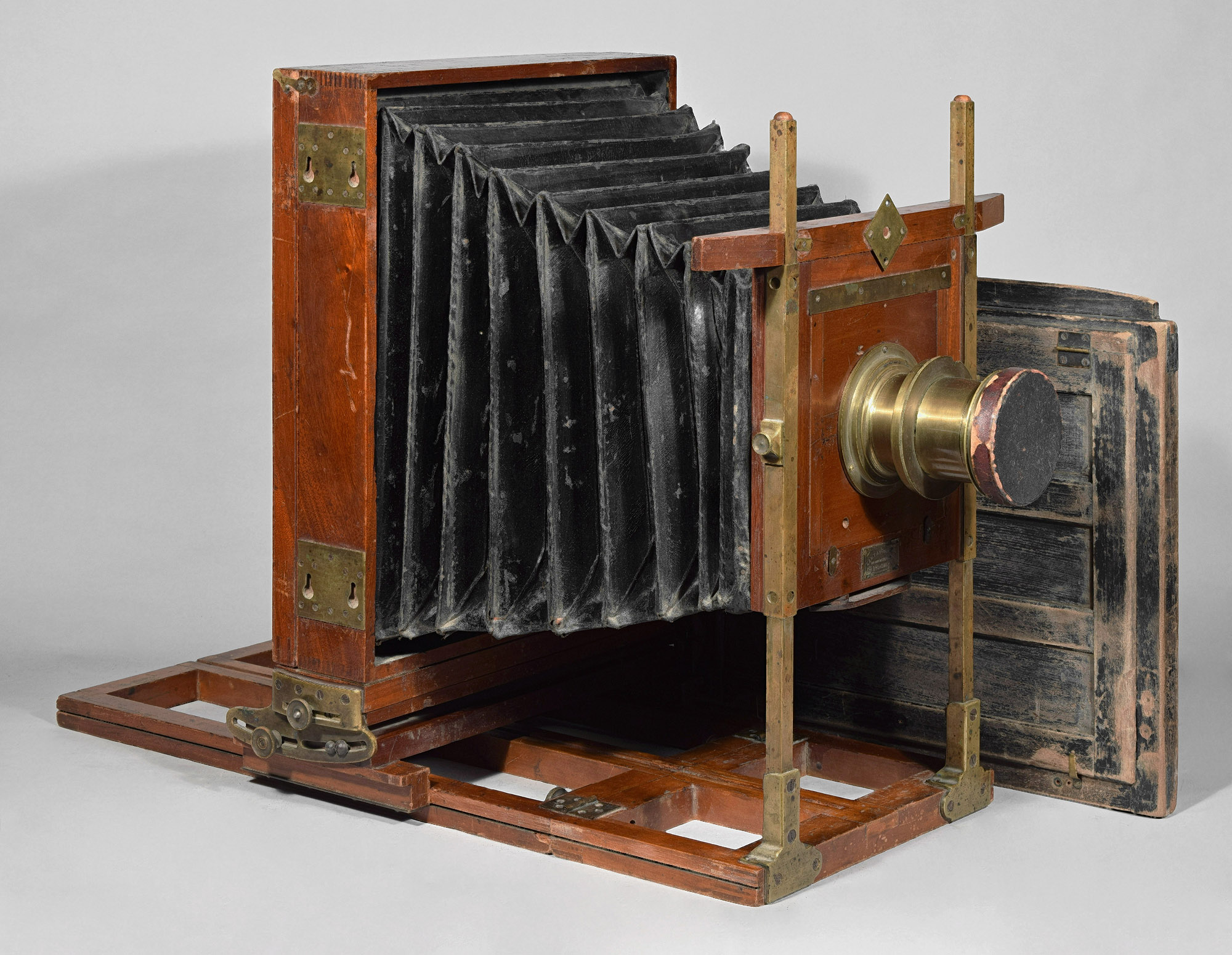
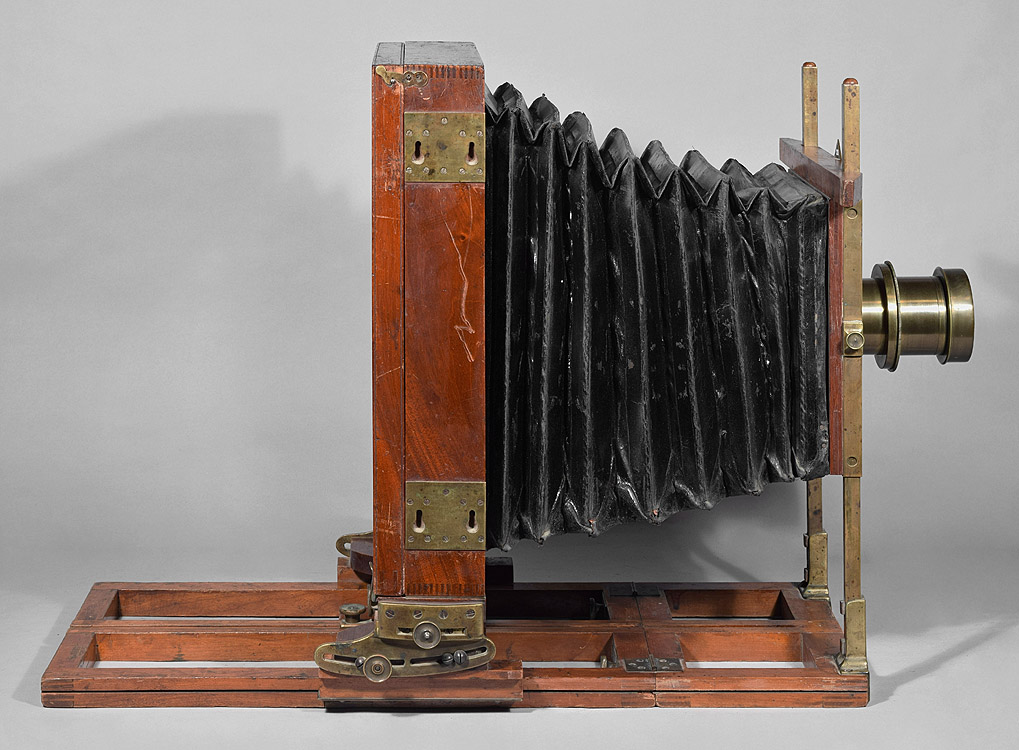

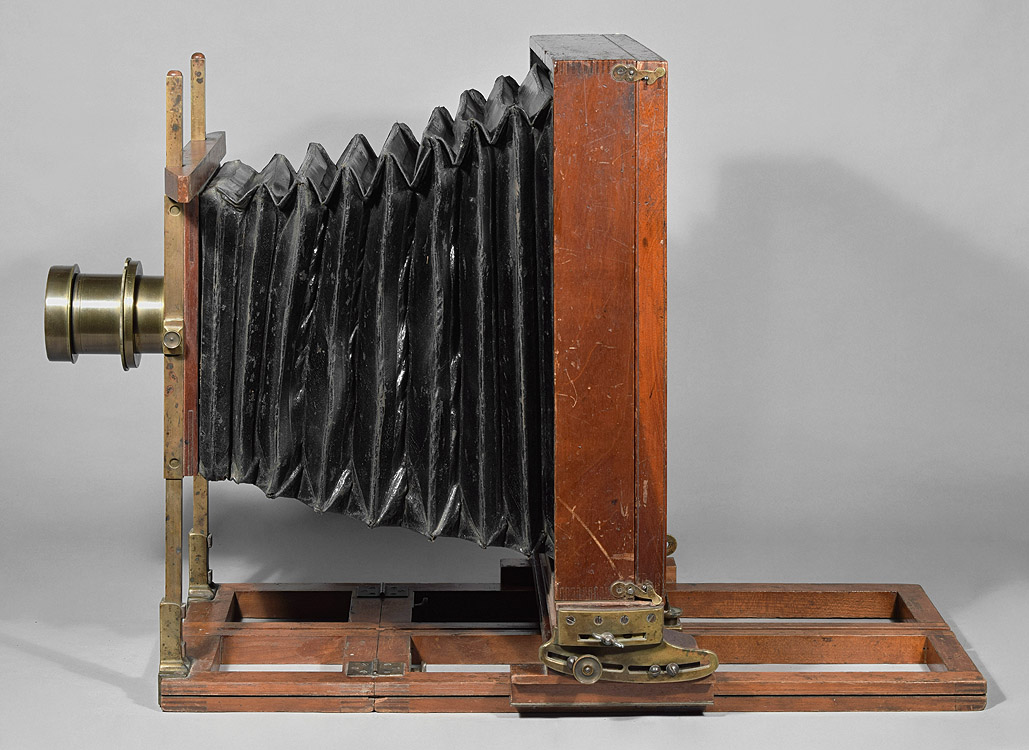
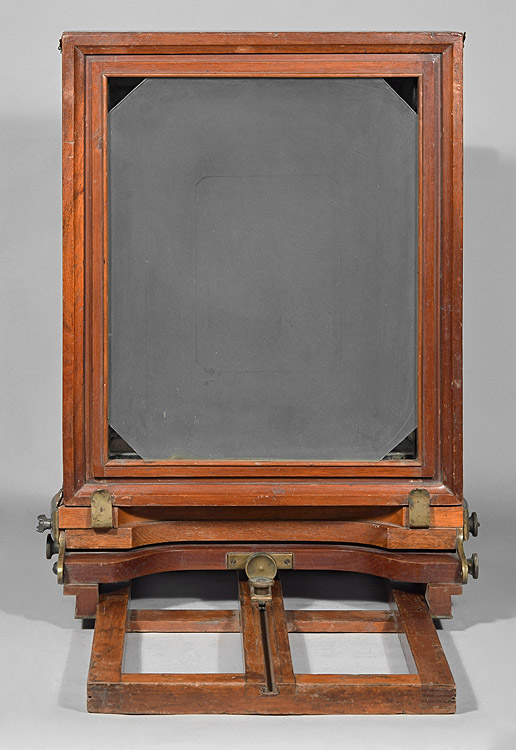
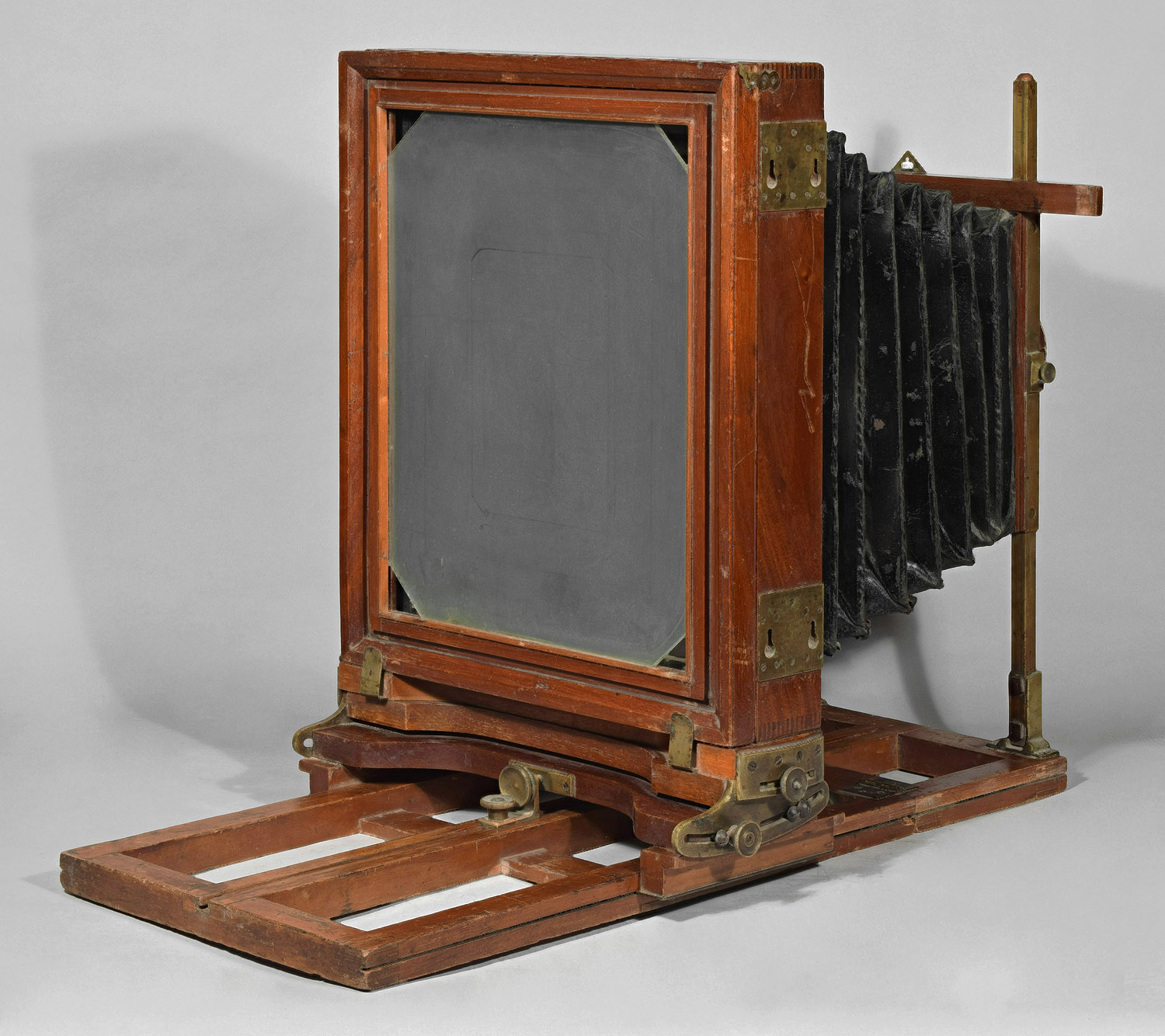
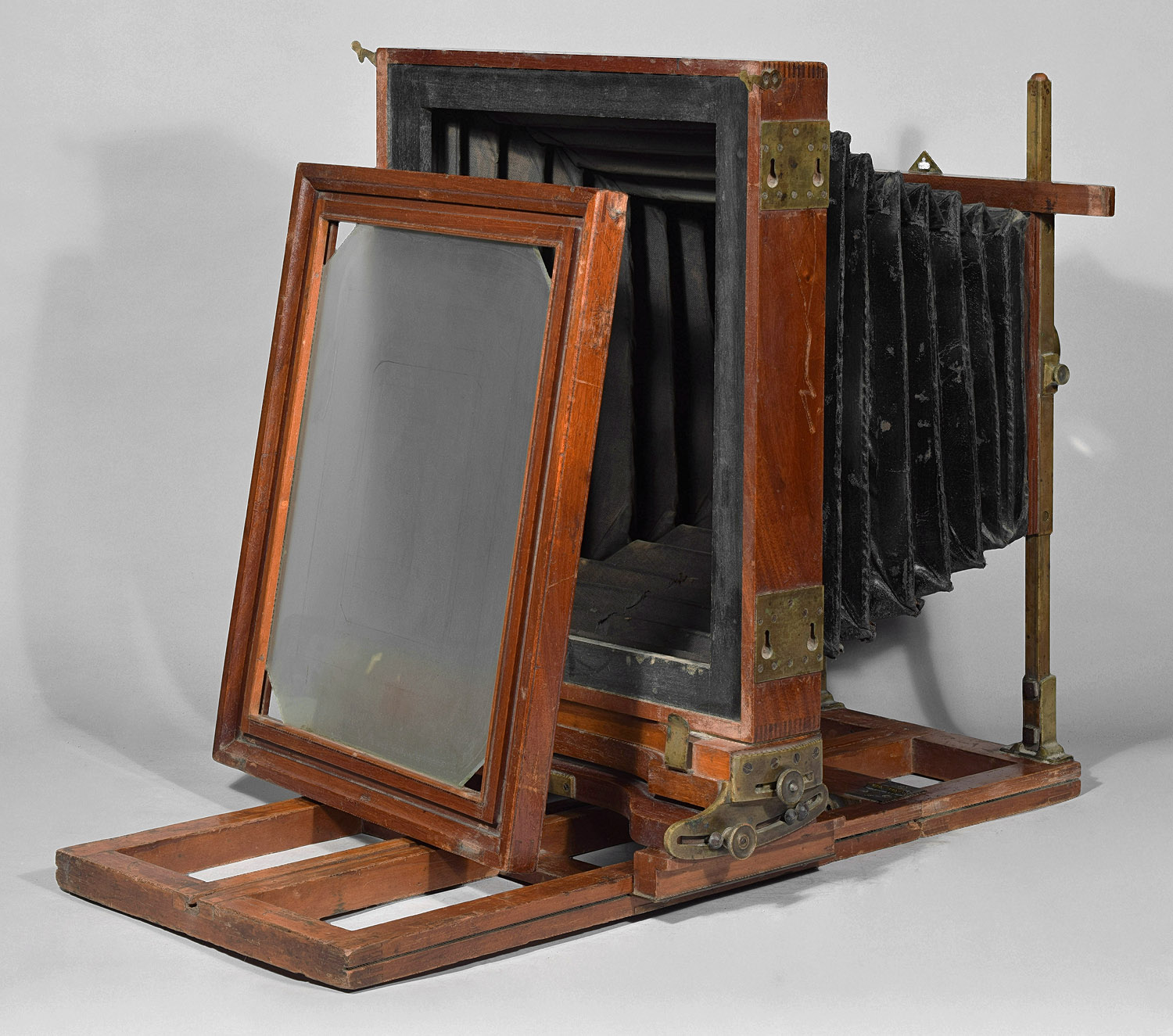
Bottom
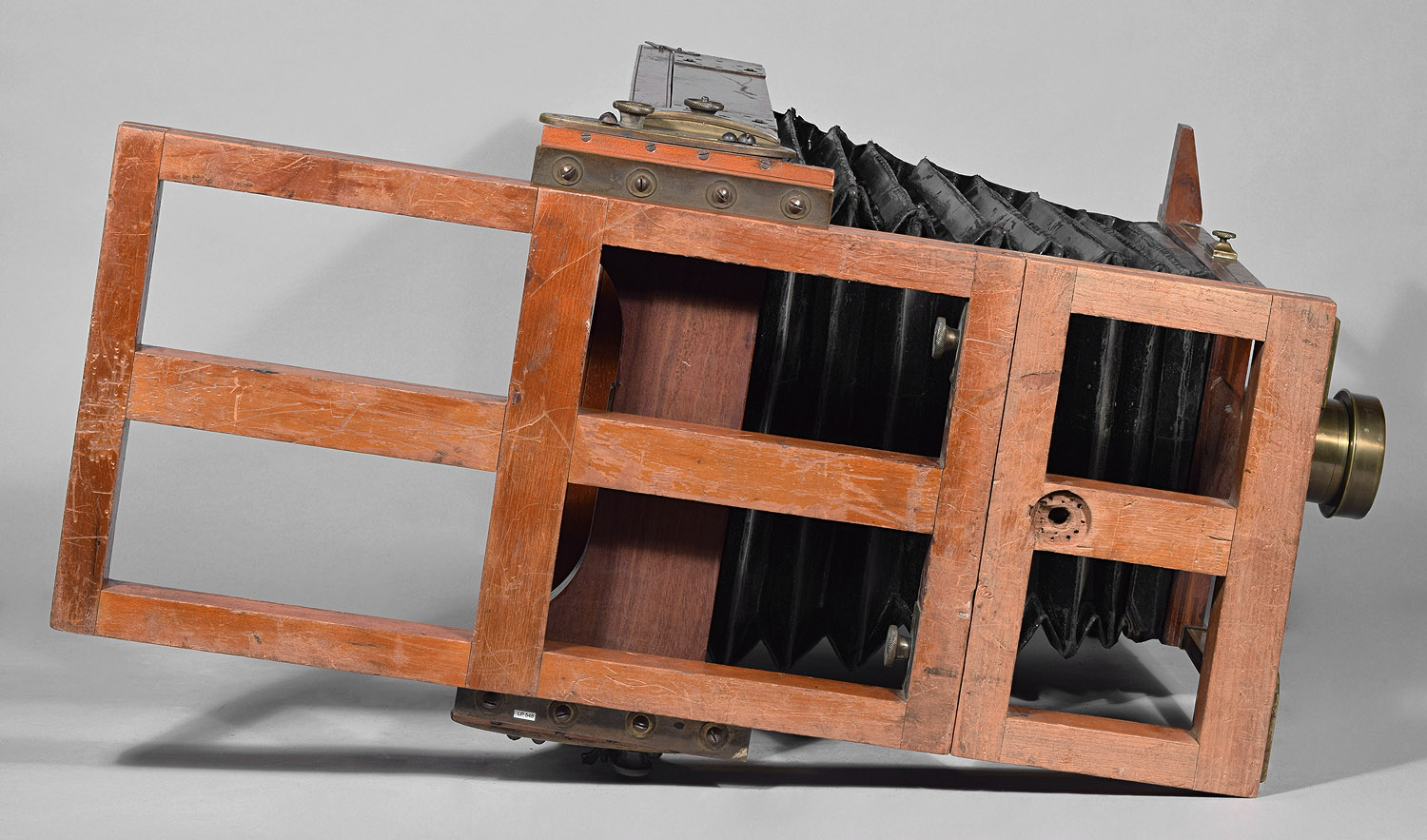
Plate holder, with wooden corners for a full-sized
wet plate, and with kits for 5x7 and 8x10 dry plates (with wire corner
retainers)
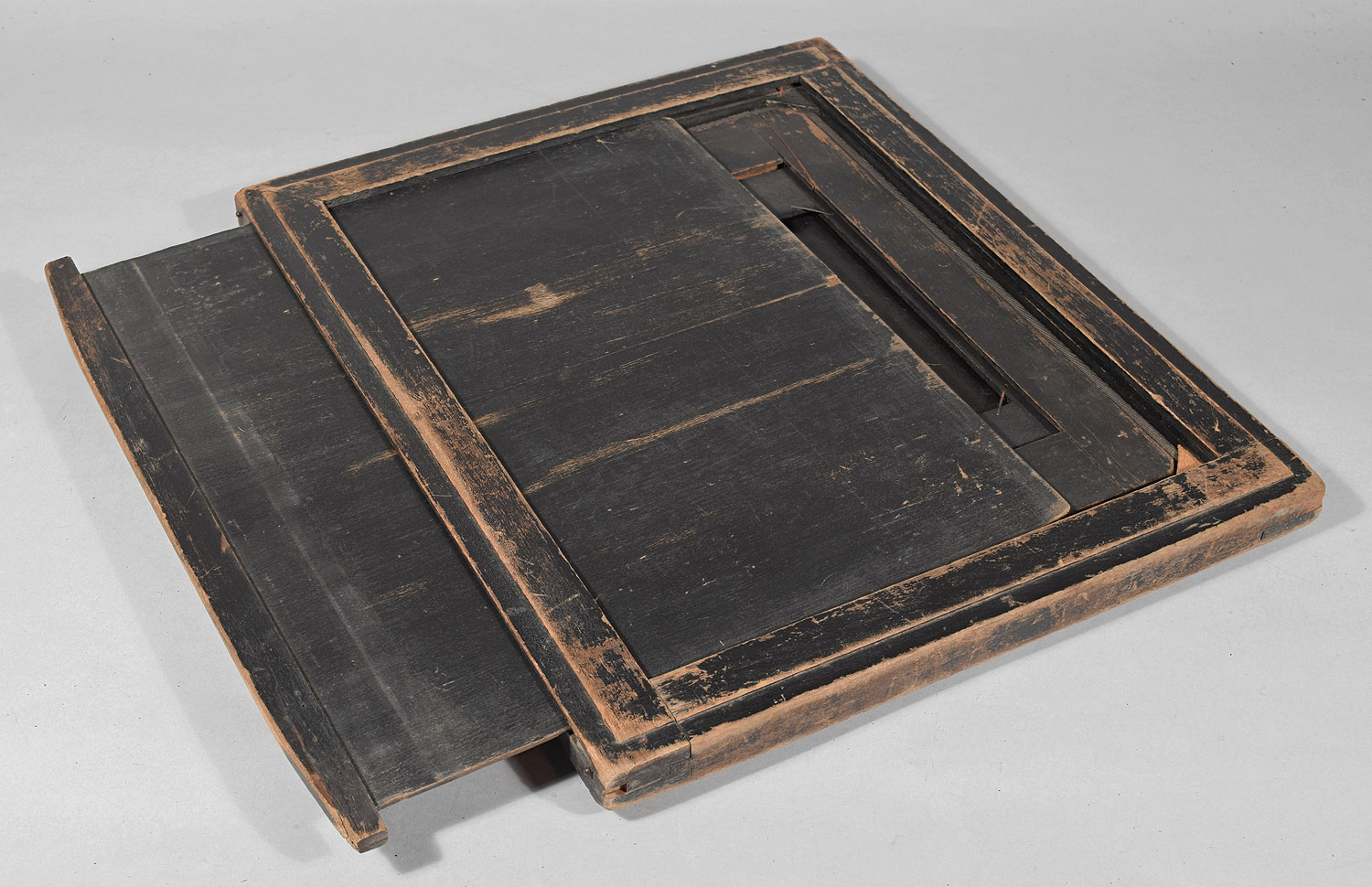
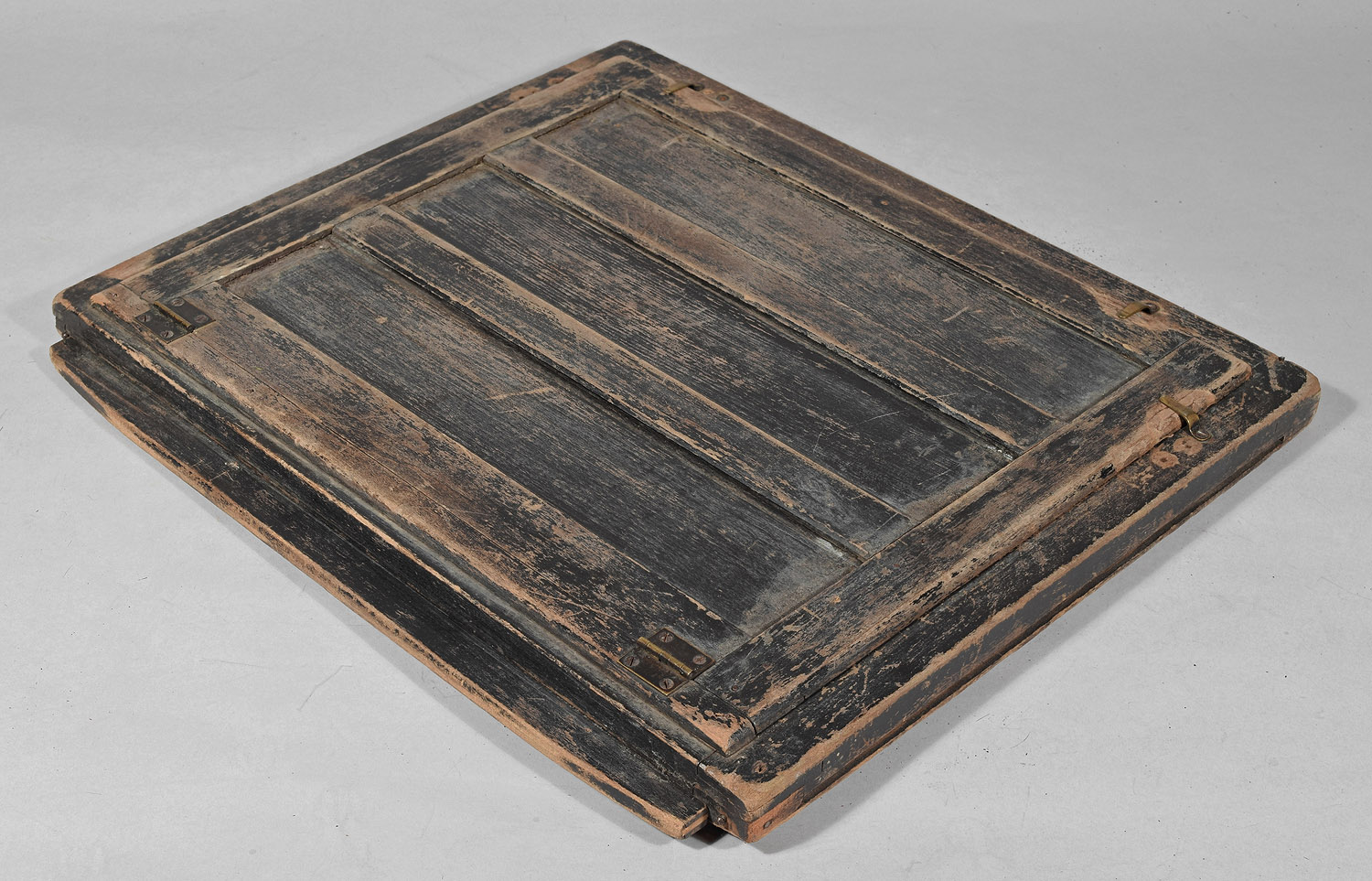
Metal label on the front
standard
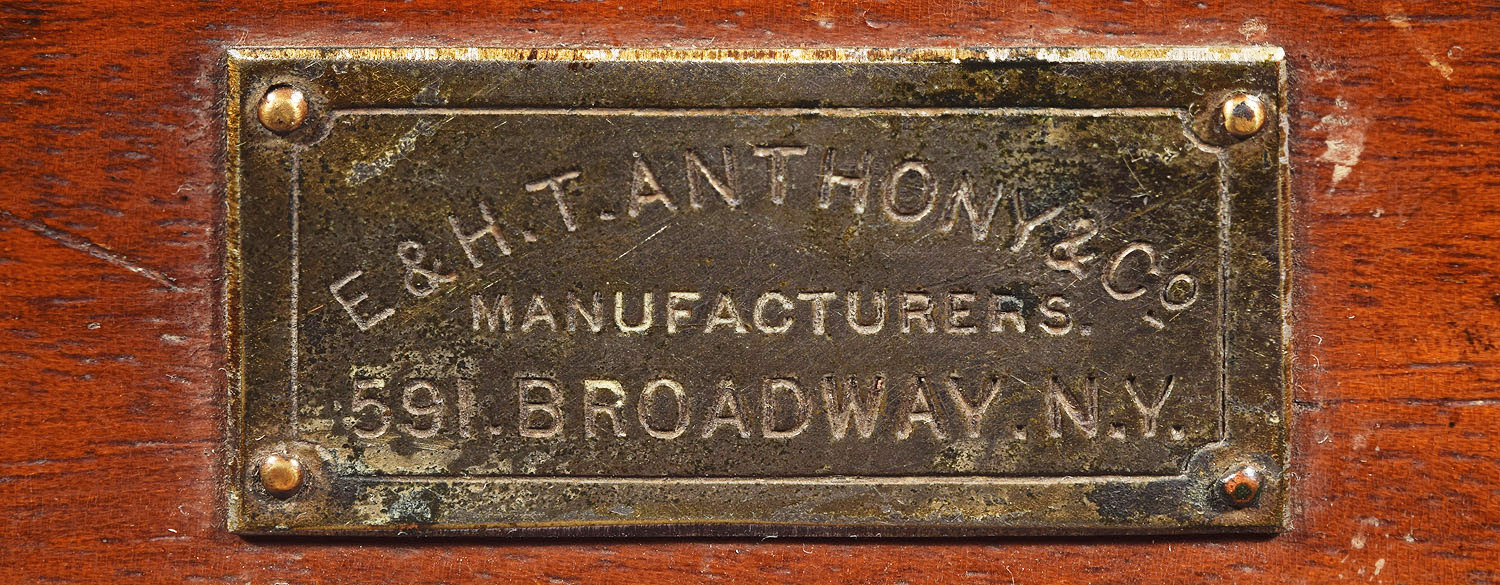
Patent stamps on the rear base rail:
1) Nov. 11, 1884 (clamp hooks, even though
they are not used on this camera),
2) Mar. 28, 1882 (rotating bellows), and
3) Feb. 20, 1883 (plate holder with a hinged
front).

Date Introduced: -
; Years Manufactured: c.
1884 The E. & H.T. Anthony Novel View was made in
various forms from c.1882, when it was introduced, until at least 1897
(the latest professional Anthony catalog I have seen). There are
at least seven variations, including the Klauber Camera, most of these
during the earliest years of its manufacture. It is one of a group
of models that used the Erastus B. Barker Mar. 28, 1882 patent #255,567
regarding changing the camera format by turning the standards while
keeping the platform fixed. The models are:
Novel View,
Novelette View, the
Fairy View, and the
Phantom
Camera. The Novel View was the first model of
these to be offered, and is generally more robust than the later models.
Specifically, the ground glass frame of a Novel camera is about
1" wide, whereas on the closely related mode, the Novelette, it
is only about 1/2" wide. The variations are: Novel View Variation 1.0:
E.B. Barker's 1882 patent illustrated a camera that can be disassembled
by unscrewing three thumbscrews, the front and back standards and the
bellows rotated, and reassembled. This variartion retains the same
disassembly/reassembly features, but has been made lighter in weight by
using a frame-type front standard and tapering bellows. Cameras
that are routinely disassembled to yield loose screws are not destined
to stay in complete condition for long, and, if any of this variation of
Novel View were ever sold, it probably was not many. I have seen
no extant examples. Novel View Variation 1.5:
This is the earliest variation of the Novel View of which I have seen an
example - that after almost 40 years of looking. It is the first
appearance of a strip of metal running the full length of two sides of
the rear standard that contains two key-like slots that can attach to
two corresponding round screw heads on the movable base or platform.
In order to change format in this variation, the rear standard is moved
to the side to disengage the key-like slots from the round screw heads
on the movable base thereby freeing the rear standard from the platform;
then the front of the bellows including the lens board is completely
removede from the two tubular brass verticals of the front standard;
then rotated, the front standard is re-installed onto the front standard
verticals, and, finally, the rear standard is re-engaged to the platform
using the alternate key-like holes. One really has to see this
performed. It is an improvement upon Variation 1.0 in that no
loose screws are involved, but is still rather cumbersome in that a
large part of the camera comes loose in one's hands as the manoeuver is
performed. It has a hinged ground glass frame made from a thick,
ogee-like molding; the ground glass is held in place by slim moldings
anchored to the thick moldings with brads - a handsome if expensive back
to make and install. This variation is extremely rare, being seen only once
by me, and likely made for only a short time, e.g., one year or
less. Novel View Variation 1.8:
This is the second variation to feature a strip of metal running the
full length
of two sides of the rear standard that contains two key-like slots that
can attach to two corresponding round screw heads on the movable base or
platform. So far, this is identical to Variation 1.5.
However, this variation has a bellows that is attached to a circular
plate at the front that can spin 360° - the earliest this feature
appears that will become standard in all Novel and Novelette-type
cameras. This is an improvement over removing the front of the
camera that was necessary in Variation 1.5 to switch formats.
The hinged back is the handsome, molded type identical to that on
Variation 1.5. Variation 1.8 is as rare as
Variation 1.5, having been seen only once by me, and was also likely
made for only a short time, e.g., one year or less. Novel View Variation 2.0:
Variation 1.5 and Variation 1.8 both utilize
relatively slim metal inlays that extended the length of each side for
strength, each engaging two screws. Variation 2.0 changes
that feature, and substitutes two heavy duty rectangles having a size
that extends accross the width of each side (depends on size but less
then 3 inches) by approximately 2 inches. Each of the two rear
standard sides to be involved in switching formats has two such plates
and each plate has two key-shaped slots for a total of four slots and
four screws securing the standard. To emphasize the heavy duty
nature of the Novel, each plate was pinned to the wood by as many as six
wood screws. To save expense, the plates were not inlaid into the
wood, but applied to the surface. The front standard with its
revolving bellows attachment, remains the same as in Variation 1.8.
The hinged back is the handsome, molded type identical to that on
Variation 1.5 Novel View Variation 2.1:
This Variation is similara to Variation 2.0, in that it has the
two applied brass plates on each of two sides for switching format and a
rotation system on the front standard. It does, however have very
heavy duty cast (not stamped) brass hardware that attaches the front standard
to the platform. Both examples of this variation observed are
11x14" size, and the heavy front hardware has never been seen on a Novel
View less than the 11x14"
in size. The hardware is identical in shape (but smaller) to that
used for the 14x17" Novel Combination View (The Klauber View).
This adaptation to more robust hardware is no doubt a result of stamped
brass being too weak to support the larger sizes of Novel cameras, and
such close but stronger versions of the rest of the variations listed
here may exist, were large examples of them ever be found. The
back of this variation is not hinged, but removes entirely when a plate
holder is installed - probably due to the inability of hinges to
adequately support the weight of a back this large. The back also
has a new and fancy profile, having the look of two nested frames; this
might also be designed to increase strength without increasing weight,
similar to a tubular structure being stronger than a solid structure of
the same size. Novel View Variation 3.0:
In this variation, the fancier and labor-intensive back seen in
Variation 2.0 and earlier has been replaced with a very plain and
utilitarian-looking ground glass frame, in which the ground glass is
held by four pieces of sheet brass screwed in at the corners.
Otherwise, the model remains unchanged. Novel View Combination (The Klauber View):
This camera is called Combination because it can be a camera for views
(outside views, that is), and also a camera for portraits (more like a
stucio camera). It was only offered in size 14x17". When set
up for views, the camera is identical to Novel View Variation 2.1,
the large size version of Variation 2.0 (which is why it is
included here amongst the Novel View variations). When
set up for portraits, the rear of the view bellows is clipped onto a
sliding intermediate base, which has been placed in front of the tilting
view base. It appears from the engraving that a second bellows
(this one non-tapered) having another a slim support standard and a rear
standard (making four standards altogether) is installed at the rear of
the view (2nd standard) and its rear standard key slots clipped onto the
tilting, former view base, to make the new rear (4th) standard. I
have not seen an example of the entire system, although the
Klauber link shows a 14x17 view that
could represent the Klauber View Camera Setup. References:
Construction: rear
focus via push-pull; single swing;
reversing by rotating bellows and back; replacement lens board - other
Anthony's are plywood
Materials: mahogany body; cherry base;
black fabric bellows; heavy duty brass hardware
Sizes Offered: at least 11x14 and probably 14x17; 17x20; 18x22
Notes:
